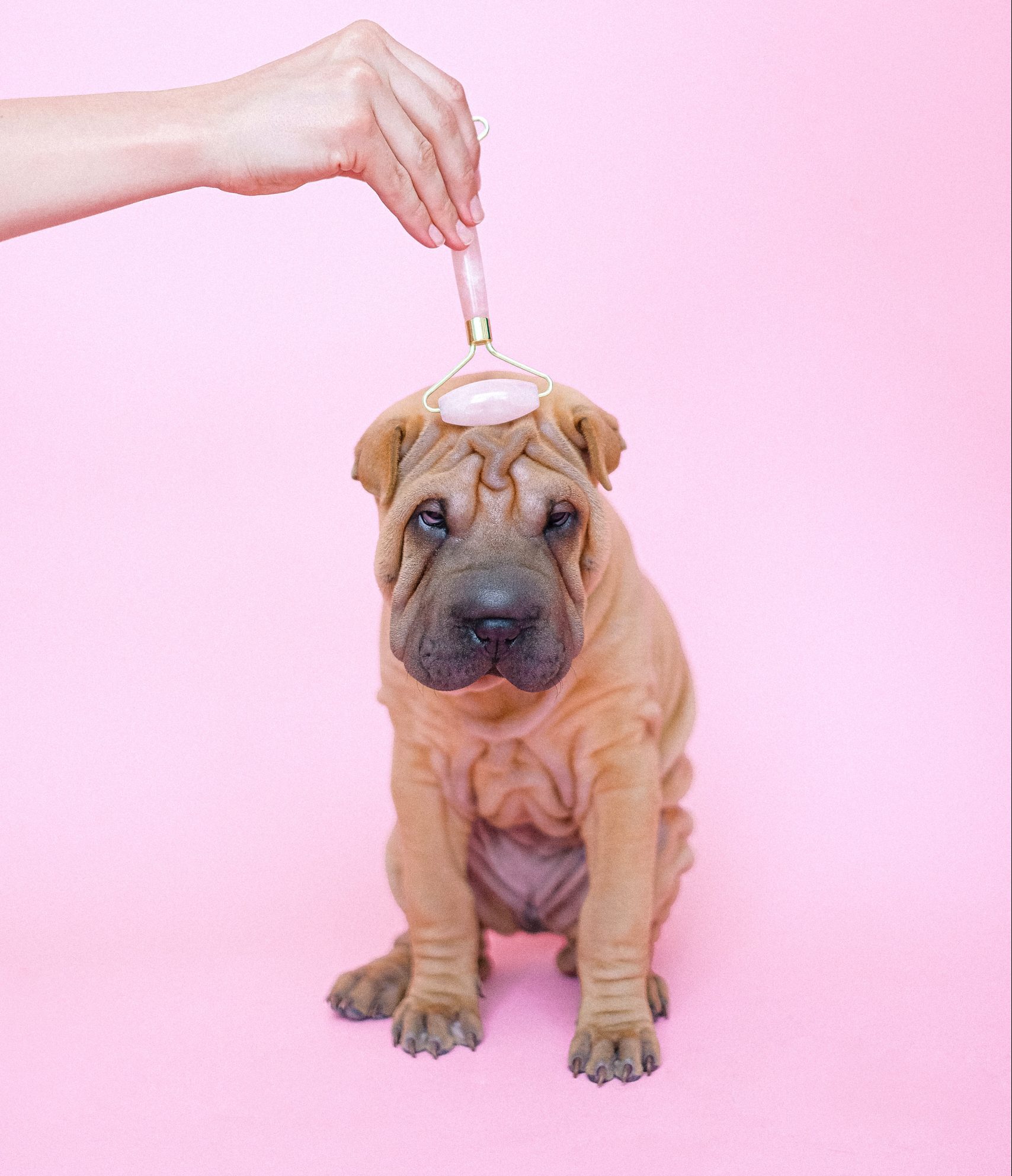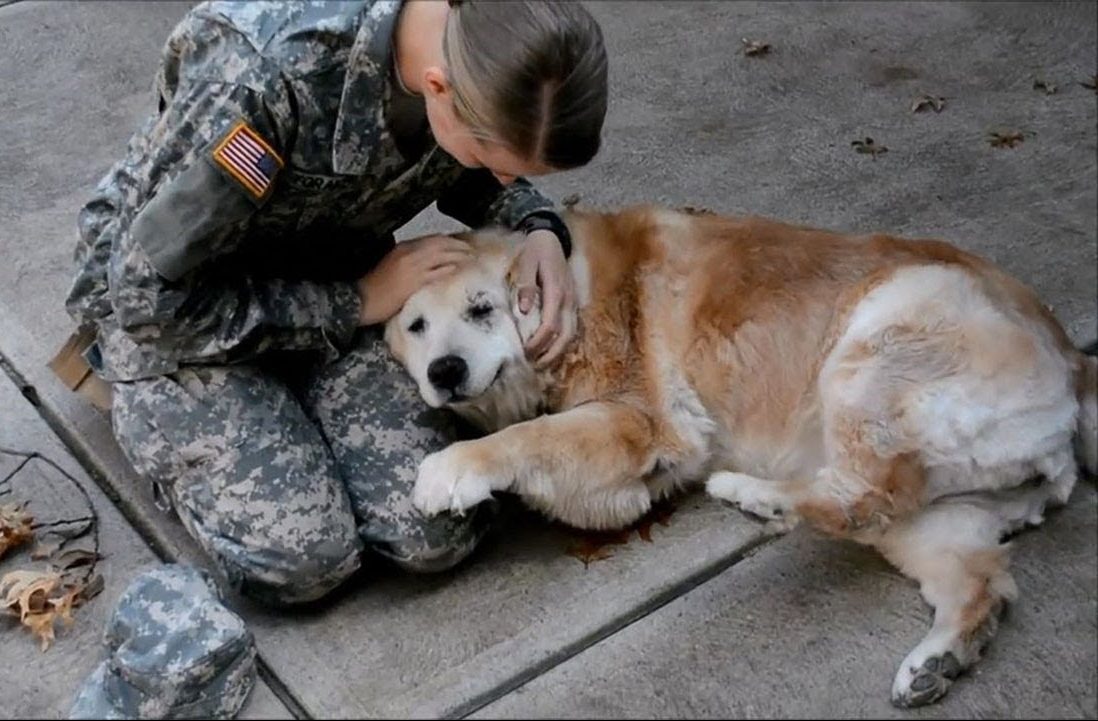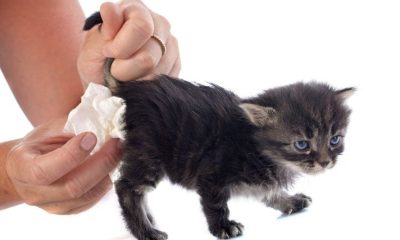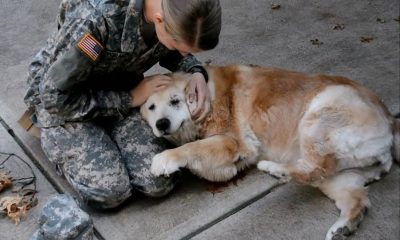Dogs
Dealing With Your Dog’s Weight Problems

If you have a dog, it’s important to keep an eye on its weight. Weight problems can lead to health issues for your beloved pet. Unfortunately, weight problems in dogs are all too common, so it’s important to be aware of the signs and learn how to deal with them. In this blog post, we’ll discuss how to identify if your dog is having weight problems and what to do about it.
Check if your dog is at a healthy weight
When determining whether your dog is at a healthy weight, there are a few things to keep in mind. First, you should know the breed and age of your dog. Different breeds have different body types and sizes, so what may be a healthy weight for one breed may not be for another. Also, dogs can carry more weight as they get older.
Next, you’ll want to use a body condition scoring system to measure your dog’s body fat percentage. This is usually done by evaluating your dog’s ribs and spine. A dog that has too much fat on its ribs and spine indicates that the animal is overweight. If you cannot feel your dog’s ribs, it is likely overweight. If your dog’s ribs and spine are visible, but the animal still looks plump, it is likely overweight. You should also check if your dog’s waist appears tucked in and not rounded when viewed from above.
Finally, you should ask your vet for advice and have them weigh your pet. Your vet will be able to tell you if your dog is at a healthy weight and make recommendations for an ideal weight.
By following these steps, you can determine if your dog is at a healthy weight and address any potential issues.
Compare your dog’s weight to other dogs
It can be difficult to tell if your dog is at a healthy weight or not without having a frame of reference. Comparing your dog’s weight to other dogs of the same breed and age can help you determine whether your dog has a weight problem. The easiest way to do this is to take your dog to a vet and have them weigh them and compare the results to the average weight for their breed. You can also compare the size and shape of your dog to other dogs of similar breeds. If your dog appears overweight compared to others, then it’s time to take action.
Consider your dog’s age, breed, and activity level
It is important to take into account your dog’s age, breed, and activity level when determining if your pup has a weight problem. Different breeds and sizes of dogs have different ideal weights, as do puppies and senior dogs. Puppies naturally gain weight as they grow into their adult form, so it is important to monitor their weight gain during this time. Senior dogs may have weight issues due to their age and may need to maintain a leaner physique.
For all ages, breeds, and sizes of dogs, physical activity levels are an important factor in determining the right weight. A couch potato dog will likely have more difficulty staying at an ideal weight than one who gets regular exercise. If your pup doesn’t have a consistent daily exercise routine, that can also contribute to weight problems. As you assess your dog’s weight, consider what kind of activities you can incorporate into their day to help them stay fit and healthy.
Take your dog to the vet for a checkup
Taking your dog to the vet for a checkup is an important step in identifying and addressing any weight issues your pet may have. Your vet can conduct a physical examination and provide an accurate evaluation of your dog’s current weight, as well as discuss with you any potential dietary and lifestyle changes that may be necessary to ensure your pet remains at a healthy weight. Additionally, your vet can advise you on any underlying health conditions that could be contributing to your pet’s weight gain or inability to lose weight. It is also essential to check with your vet to make sure any new diet or exercise plan is appropriate and safe for your pet. Having your vet’s professional advice is a great way to ensure your dog’s weight issues are addressed in the best possible way.
Put your dog on a diet and exercise plan
If your vet has determined that your dog is overweight, they will likely recommend a diet and exercise plan to help them reach a healthy weight. Diet and exercise plans should be tailored to the individual needs of your dog and should be discussed with your vet or a certified nutritionist.
When it comes to diet, there are many options available for your dog. It’s important to discuss the best option for your pet with a qualified professional. Many veterinarians will recommend a prescription diet designed to help your dog lose weight. This may include reduced-calorie food that has fewer carbohydrates and more protein. You should also speak to your veterinarian about the right portion size for your pet.
Exercise is also an important part of any weight-loss plan. Depending on the age, breed, and activity level of your dog, your veterinarian can provide you with an appropriate exercise plan. The goal of any exercise plan should be to increase activity levels while keeping your pet safe and comfortable. This could include activities such as going on walks, playing fetch, or swimming. Be sure to always monitor your pet while exercising to ensure they are not overexerting themselves.
Once you have a diet and exercise plan in place, it is important to monitor your dog’s progress. Keeping track of their weight loss over time can help you adjust the plan if needed. Additionally, regular checkups with your veterinarian can help ensure that your pet is maintaining its health and reaching its goals.
With the right diet and exercise plan in place, you can help your dog reach a healthy weight. Keeping up with these habits can also help to maintain their health for years to come!
Monitor your dog’s progress
Keeping an eye on your dog’s weight can help you determine if the diet and exercise plan you have put in place is working. It is important to monitor your dog’s progress to ensure that they are reaching its ideal weight. Start by weighing your dog every week or two, and tracking their progress in a notebook or spreadsheet. You can also measure their waistline and look at them from above to see if they are losing or gaining weight. Additionally, monitor their behavior and energy levels to gauge how they are doing. If your dog seems lethargic, not interested in food, or isn’t responding to the diet and exercise regimen, contact your vet for advice. By monitoring your dog’s progress, you can make sure that the plan you have in place is effective and helps them reach their ideal weight.
Read Also :
How to Pick the Right Pet for Your Lifestyle and Living Situation?
Raw Dog Food vs. Commercial Dog Food: Which Is Better for Your Canine?
Dogs
Everything You Need to Know About Neutering for Pets

Lo
Neutering for pets is a common procedure that is important for the long-term health and well-being of your furry friend. Neutering involves surgically removing either the testes or the ovaries and uterus of an animal, usually a dog or cat. There are many benefits to neutering your pet, such as reducing their risk of cancer, controlling their behavior, and preventing unwanted litters. It is recommended that pet neutering be done at a young age, but it can be performed at any time. In this blog post, we will provide all the information you need to know about neutering for pets, including when it should be done and the potential risks involved.
Dogs
What to Do With Your Dog’s Body After Death: A Guide for Pet Owners

My dog died, and I’m not sure what to do with their body. It’s a heartbreaking moment for any pet owner, and the uncertainty of what to do can make it even more difficult. In this blog post, I’ll provide a comprehensive guide for pet owners on what to do with their dog’s body after death. We’ll cover everything from burial and cremation to taxidermy and memorializing your beloved pet. No matter what you decide to do, I hope this article will help you in this tough time and provide you with the resources you need to properly honor your pet’s life.
Dogs
Keep your distance: signs that you should keep away from your furry friend

When your pet displays certain symptoms, it is important to stay away to protect yourself and your pet. If you observe any of the following pet symptoms, it’s best to keep your distance until the issue has been addressed: lethargy, vomiting, diarrhea, excessive scratching or licking, shaking or trembling, sudden changes in appetite, coughing, sneezing, or discharge from the eyes or nose. Taking steps to stay away from your pet during these times will help to ensure the safety of both you and your furry friend.
Coughing and sneezing
Coughing and sneezing are common symptoms that our pets may experience from time to time. Just like us, they can catch colds or suffer from allergies, leading to these respiratory issues. While coughing and sneezing can be relatively harmless, it’s still important to take precautions to protect both you and your furry friend.
When your pet starts coughing or sneezing, keeping your distance is best. This is especially true if they have any other symptoms such as discharge from their nose or eyes, difficulty breathing, or lethargy. Coughing and sneezing can be signs of more serious underlying conditions such as respiratory infections or allergies. In some cases, they may even be contagious to humans, so it’s crucial to avoid close contact until you can consult a veterinarian.
Remember to provide a comfortable and clean environment for your pet to help alleviate their symptoms. Keep an eye out for any changes in their condition, and if their coughing or sneezing worsens or persists, make sure to seek professional help. Taking these precautions will help ensure the well-being of your pet and minimize any potential risks to yourself.
Trending

 Cats12 months ago
Cats12 months agoDon’t Feed Your Cat These 8 Foods!

 Cats8 months ago
Cats8 months agoWhy Do Cats Spray and How Can You Stop Them? Insights into Urine Spraying in Male Cats

 Dogs2 years ago
Dogs2 years agoSo You’re Thinking About Getting a Poodle

 Birds1 year ago
Birds1 year agoThe Perfect Blend for Your Birds: Birds and Blend

 Horses1 year ago
Horses1 year agoDon’t Go Horse Shopping Without Checking This Dressage Horse Shopping Checklist First!

 Cats7 months ago
Cats7 months agoPre-Vaccination Prep: Getting Your Cat Ready

 Cats7 months ago
Cats7 months agoThe Ins and Outs of Cat Sterilization: Removing the Female’s Ovaries

 Dogs7 months ago
Dogs7 months agoWhat to Do With Your Dog’s Body After Death: A Guide for Pet Owners

















